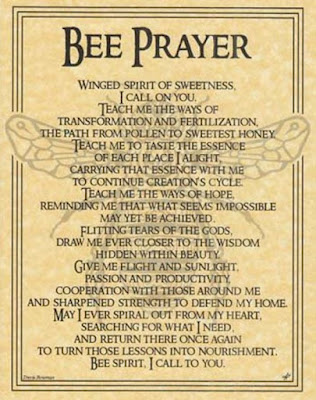Before we bid summer goodbye wonder | wander | women would like to shine the spotlight on our worker bees, honeybees, bumblebees, buzzing bees.
 |
| bee villages of NYC |
It’s estimated there are more than 400 bee species in New York. More than half of these species are digger bees that nest in the ground.
 |
| beekeeping in NYC |
New York City is home to more than eight million humans, but it also supports hundreds of beehives - each containing tens of thousands of busy pollinators.
 |
| 10 European woodcarder, 13 sculptured resin, 15 unequal cellophane bees |
The New York City Food Policy Center at Hunter College has compiled a list of 11 rooftop and garden apiaries that are helping honeybees thrive, one season at a time.
 |
| bee spirit totem |
It is no wonder than in native traditions bee is a powerful symbol and teacher - whether as spirit guide, animal totem, or power animal.
 |
| traditional native invocation |
With the current threats on colonies worldwide when bee shows up in your life it's time to pay attention. Bee symbolism and meaning is steeped in good medicine - speaking to the sacred calling both of the individual and the collective.
 |
| 1. common eastern bumblebee, 2. western honeybee, 3. brown belted bumblebee, 4. eastern carpenter bee |
Are you shouldering heavy burdens? Do you need help pollinating new ideas and projects? Is your soul seeking a community to which you can belong?
 |
| 5. two spotted bumblebee, 6. ligated forrow bee, 7. pure green sweet bee |
Bee spirit as a spirit, totem, and power animal can help and support us. Bee teaches how our higher self can aid in a flight pattern that lands us sweetly in the best of spots.
 |
| 8. golden northern bumblebee, 9. bicolored striped sweat bee 11. tricolored bumblebee, 12 two spotted longhorn bee |
Honeybees have been in the spotlight for the past several years because of national debates over pesticide safety, concern over colony collapse disorder, and climate change.
This attention is much deserved with 35% of the world’s food crops dependent on pollinators like bees, according to the Natural Resources Conservation Service.
Time to do what we can as individuals and collectively.

No comments:
Post a Comment
Note: Only a member of this blog may post a comment.